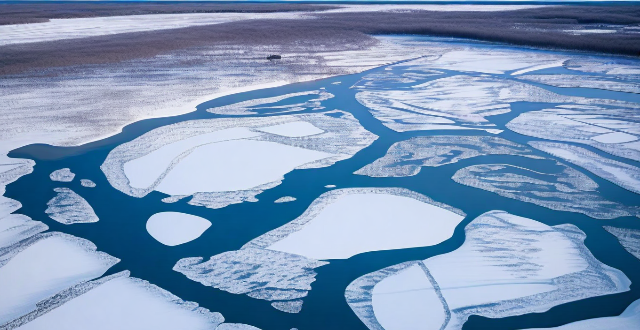The impacts of climate change on global water resources include reduced availability due to melting snowpack and glaciers, more frequent droughts and floods, saltwater intrusion into coastal aquifers, and changes in runoff patterns. Water quality is also affected by warmer water temperatures leading to harmful algal blooms, acid rain from increased carbon dioxide levels, pollutant transport from heavy rainfall events, and eutrophication from nutrient loading. The distribution of water resources is impacted by increased water stress in arid regions, migration and displacement of people seeking reliable water sources, strain on infrastructure from extreme weather events, and disruption of aquatic ecosystems due to altered flow regimes. Addressing these challenges requires both mitigation efforts to reduce greenhouse gas emissions and adaptation measures to build resilience against the impacts of climate change on water resources.

Impacts of Climate Change on Global Water Resources
Introduction
Climate change is a global phenomenon that affects various aspects of the environment, including water resources. The following sections will discuss how climate change is affecting global water resources in terms of availability, quality, and distribution.
Availability
1. Reduced Snowpack and Glaciers: Climate change leads to warmer temperatures, which cause snowpack and glaciers to melt faster than they can be replenished. This reduces the amount of water available for downstream communities during dry seasons.
2. Droughts and Floods: Changes in precipitation patterns due to climate change can result in more frequent and severe droughts in some regions, while other areas may experience increased flooding. These extreme weather events can significantly impact water availability.
3. Saltwater Intrusion: Rising sea levels caused by climate change can lead to saltwater intrusion into coastal aquifers, reducing the availability of freshwater resources for drinking, agriculture, and industry.
4. Changes in Runoff: Warmer temperatures can alter the timing and amount of runoff from snowmelt and rainfall, affecting water availability for reservoirs, irrigation systems, and ecosystems.
Quality
1. Temperature Rise: As temperatures rise, water bodies become warmer, which can lead to harmful algal blooms and decreased oxygen levels, negatively impacting aquatic life and making water unsafe for human consumption.
2. Acid Rain: Increased carbon dioxide concentrations in the atmosphere contribute to acid rain, which can lower the pH of water bodies, harming aquatic ecosystems and potentially posing health risks to humans who consume affected water.
3. Pollutant Transport: Heavy rainfall events associated with climate change can lead to increased runoff of pollutants such as pesticides, fertilizers, and industrial waste into waterways, degrading water quality.
4. Eutrophication: Higher temperatures and nutrient loading from agricultural runoff can accelerate the process of eutrophication, where excess nutrients cause explosive growth of algae, leading to declines in water quality and fish populations.
Distribution
1. Water Stress: Climate change exacerbates existing issues of water stress in arid and semi-arid regions, where demand for water often exceeds supply. This can lead to competition between sectors such as agriculture, industry, and households.
2. Migration and Displacement: Changes in water availability due to climate change can force people to migrate within their countries or across borders in search of reliable water sources, potentially leading to conflicts over access to water resources.
3. Infrastructure Strain: Extreme weather events like floods and droughts put additional strain on water infrastructure, requiring costly repairs and upgrades to maintain functionality under changing conditions.
4. Ecosystem Disruption: Altered water distribution patterns can disrupt aquatic ecosystems, affecting species that depend on specific flow regimes for breeding, migration, and other life processes.
Conclusion
In conclusion, climate change has far-reaching consequences for global water resources, affecting both the quantity and quality of water available for human use and ecological functioning. Addressing these challenges requires comprehensive strategies that consider mitigation efforts to reduce greenhouse gas emissions alongside adaptation measures to build resilience against the impacts of climate change on water resources.